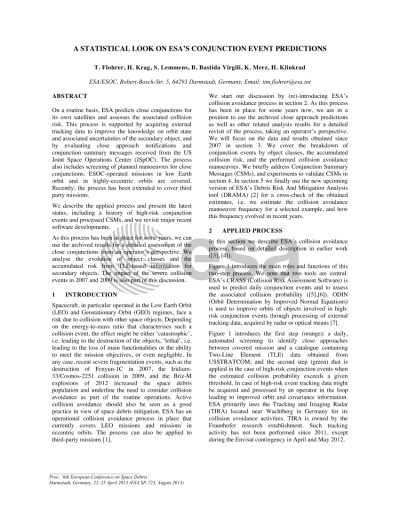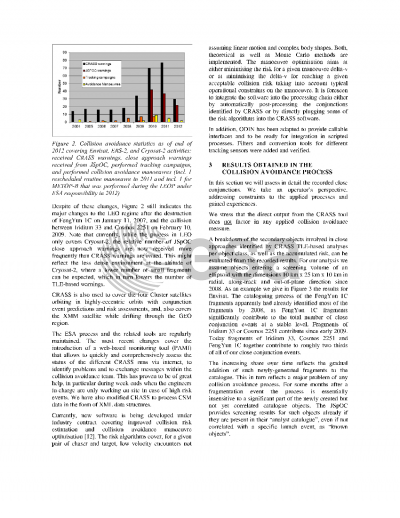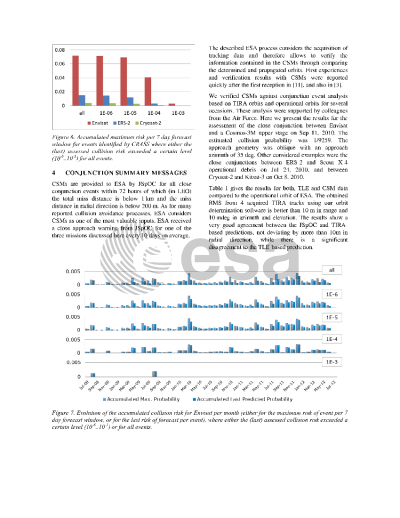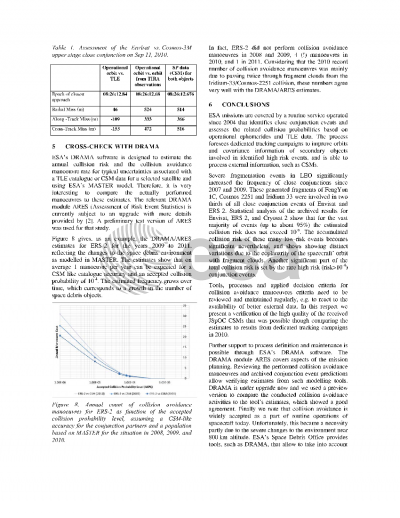Document details

Abstract
On a routine basis, ESA predicts close conjunctions for its own satellites and assesses the associated collision risk. This process is supported by acquiring external tracking data to improve the knowledge on orbit state and associated uncertainties of the secondary object, and by evaluating close approach notifications and conjunction summary messages received from the US Joint Space Operations Center (JSpOC). The process also includes screening of planned manoeuvres for close conjunctions. ESOC-operated missions in low Earth orbit and in highly-eccentric orbits are covered. Recently, the process has been extended to cover third party missions. We describe the applied process and present the latest status, including a history of high-risk conjunction events and processed CSMs, and we revisit major recent software developments. As this process has been in place for some years, we can use the archived results for a detailed assessment of the close conjunctions from an operator's perspective. We analyse the evolution of object classes and the accumulated risk from TLE-based information for secondary objects. The impact of the severe collision events in 2007 and 2009 is also part of this discussion.
Preview








